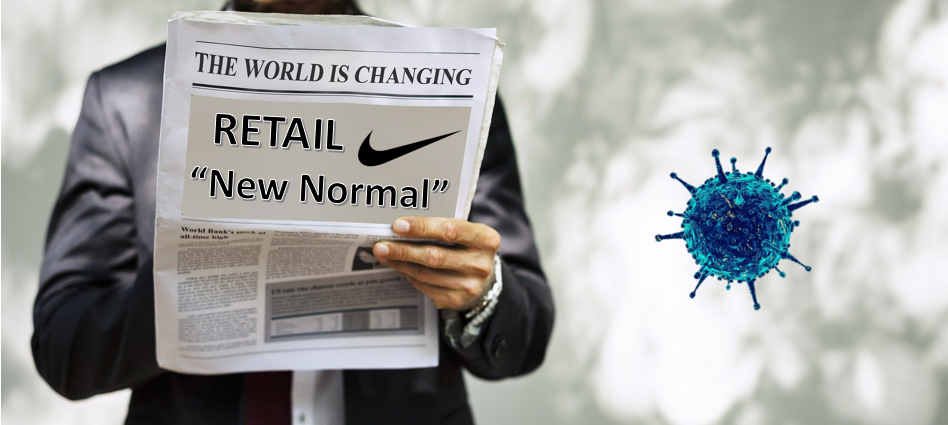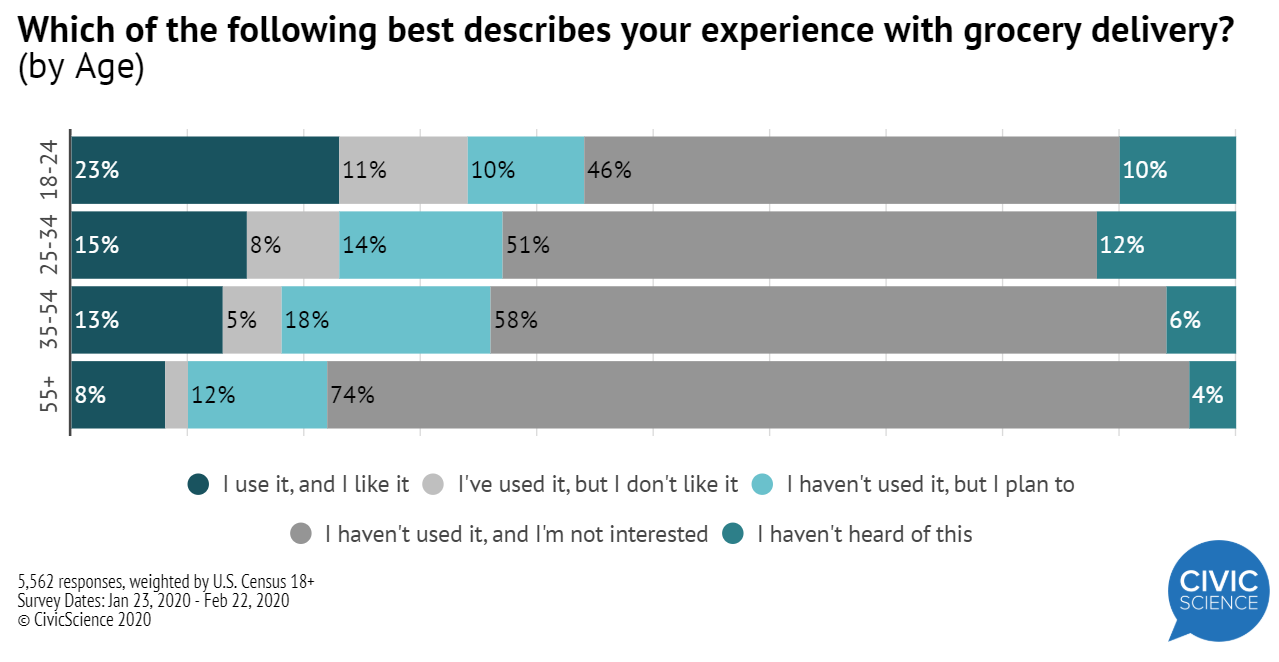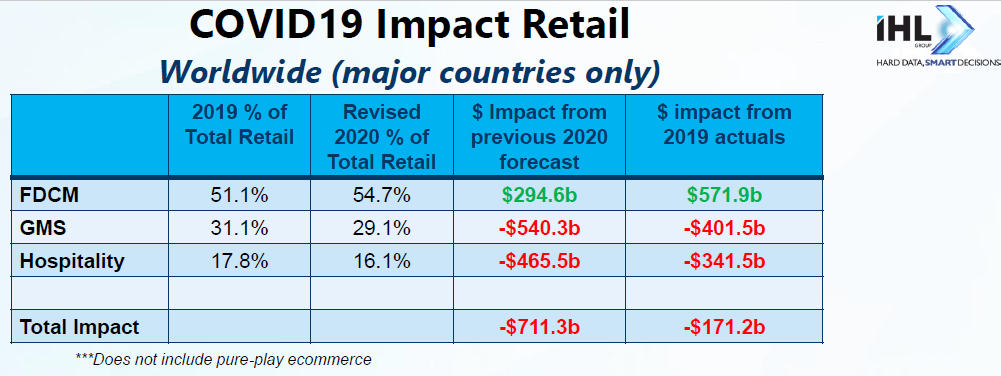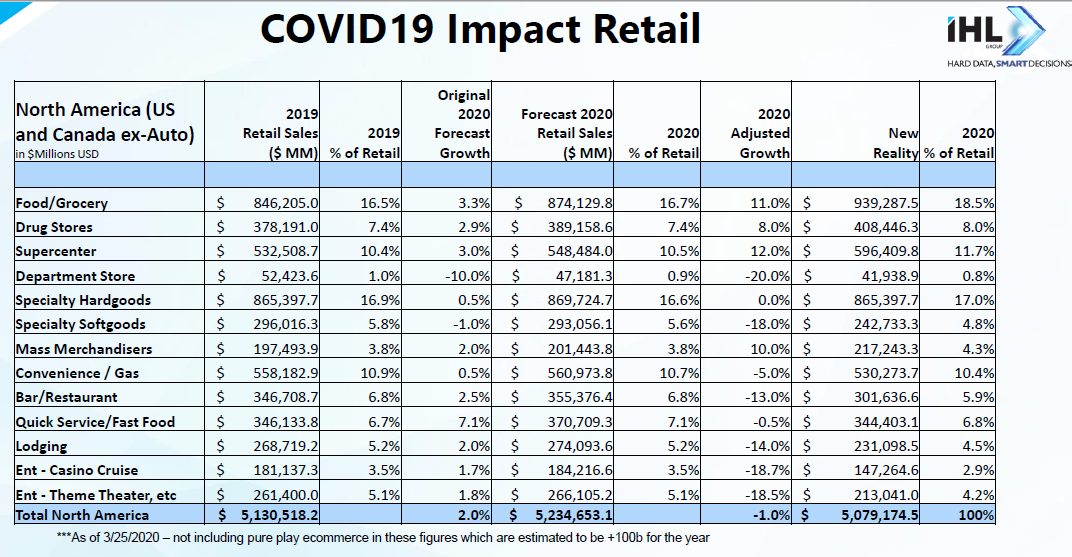The Latest Post Pandemic Retail Sales Forecasts

"At a time when people were confined to their homes, we moved swiftly to leverage our digital app ecosystem and Nike expert trainer network to inspire and support consumers across China to stay active and connected while at home. As a result, our Nike Training Club (NTC) workouts in China saw an extraordinary rise in signup and engagement. In fact, our weekly active users for all of our Nike activity apps were up 80% by the end of Q3 versus the beginning of the quarter.
And here's what happened - the strong engagement of Chinese consumers with our activity apps translated into strong engagement with our Nike commerce app. As a result, our digital business in China grew more than 30% and maintained strong momentum throughout this challenging period, a powerful statement of Nike’s agile problem-solving in times of disruption." - Nike CEO
During China's peak of the COVID-19 outbreak earlier this year, nearly 760 million people were in some form of home lockdown. Above Nike response is an example of the positive actions taken by retailers during the health crisis.
This article summarizes the COVID-19 China's "new retail" strategies, generational commerce transformation trends, and the latest global / regional retail sales forecasts post the pandemic.
China COVID-19 Lessons Accelerating the Future of Retail
Conceived by Alibaba co-founder Jack Ma, "New Retail is a critical chapter in the comeback story of physical retail, and the digitization of all retail." As China has now transitioned through most of the COVID-19 crisis, here are a few lessons from new retail:
- China's online retail market was projected to reach nearly $2 trillion in 2019 or 35.3% of total retail sales. This infrastructure was vital in responding to COVID-19.
- To protect consumers and delivery services couriers, Chinese companies rolled out "contactless delivery" services that in addition to home provided lockers or designated pick up locations. Some delivery apps, took it a step further in "offering up temperature readings of restaurant workers and couriers alongside every order of noodles or fried chicken."
- Delivery robots and drones were called into delivery service during the crisis.
- Alibaba was already aggressively expanding with multiple physical store formats, with multiple being fulfillment centers delivering fresh items in 30 minutes or less within a 1.5 km (roughly one mile) radius.
- "During the lockdown in Hubei province, the epicenter of the Covid-19 pandemic, Freshippo (Alibaba's physical store brand) dealt with the surge in demand by chartering buses for deliveries, tearing open gift boxes full of fruit to sell the contents piece by piece, and hiring thousands of laid-off restaurant and retail workers."
- JD.com "saw online grocery sales more than triple year over year during a 10-day period between late January and early February; it handled dwindling inventories by sourcing from convenience stores and other local shops and offered special benefits and fee waivers to businesses in Hubei province."
- In China, 577 million people use mobile payments. Over 81% of smartphone users leverage contactless payment solutions.
Above is not to imply that the initial responses from the digitally empowered retail technology powerhouses were perfect as shortages were also reported. China was ahead of the Western world in the digital transformation of the retail industry and this pandemic will widen the gap.
COVID-19 Unsettles Generational Retail Trends
In 2019, millennials were projected to surpass baby boomers as the largest living generation. This age group along with Gen X's were seen as the "digital first" group that would transform the retail industry. COVID-19 in disrupting this trend as even my 90-year-old father in Italy is now ordering groceries for home delivery.
Surprisingly from a survey conducted just prior to COVID-19 impacting USA, 20% of individuals aged 55+ already had either tried or were planning to use grocery delivery.

COVID-19 will break down generational trends towards digital commerce. As China demonstrated, physical stores are not going away, but for all generations, this pandemic will accelerate the digital transformation of retail.
A Reset for a Major Portion of the Global Retail Industry
Timely to the evolving COVID-19 crisis, on March 25, the IHL Group published an updated forecast for global retail sales. Assuming that the pandemic lasts three months, global retail sales will drop $711 billion from the previous 2020 forecast and $171 billion against 2019 actuals

FDCM (Grocery, Supercenters, Drug, Mass Merchandisers) will have substantial global growth while the other sectors are severely negatively impacted. "While a loss of $171.2 billion is minor against $14.2 trillion consumer economy, the speed and massive shifts in employment and supply chain disruption is unchartered waters for recovery."
Asia and North America will recover much faster than the rest of the world. Hardest hit is EMEA with a drop of $177.3 billion.
Drilling into the North America revised forecast data, you can see positive COVID-19 impact in grocery, drug stores, supercenters, and mass merchandisers.

You can also see the dramatic negative impact in the other sectors especially department stores, apparel, restaurants, and entertainment categories. Agree with the IHL Group, that this economic shock will accelerate changes in the retail industry.
Nike and the Post COVID-19 Disruptive Future of Retail
For this article, chose Nike as an example retailer because they specifically:
- Are not in the FCDM sector retailer with the positive growth discussed above.
- For some time, as discussed in other posts, they have been executing the digital transformation of their retail model.
As the Nike CEO added, "interestingly, digital has accelerated even more since the stores have been (re)open(d). [This is] I think pointing to this ‘blended digital versus physical experience’ is a thing of the past. Consumers don't think in those terms. I bring a sort of consumer technology lens, where we learned that consumers want to get what they want, when they want, how they want it. And they don't think about, ‘I'm going to make a digital purchase or a physical purchase’."A consumer may often start shopping on their mobile device. They may go into a store and have it shipped at home, they may order online and pick it up in the store. And what we're seeing in Japan, China and Korea is that seamless digital physical experience is responding to what consumers want."
Welcome to the post COVID-19 'New Normal' "Disruptive Future of Retail".
















